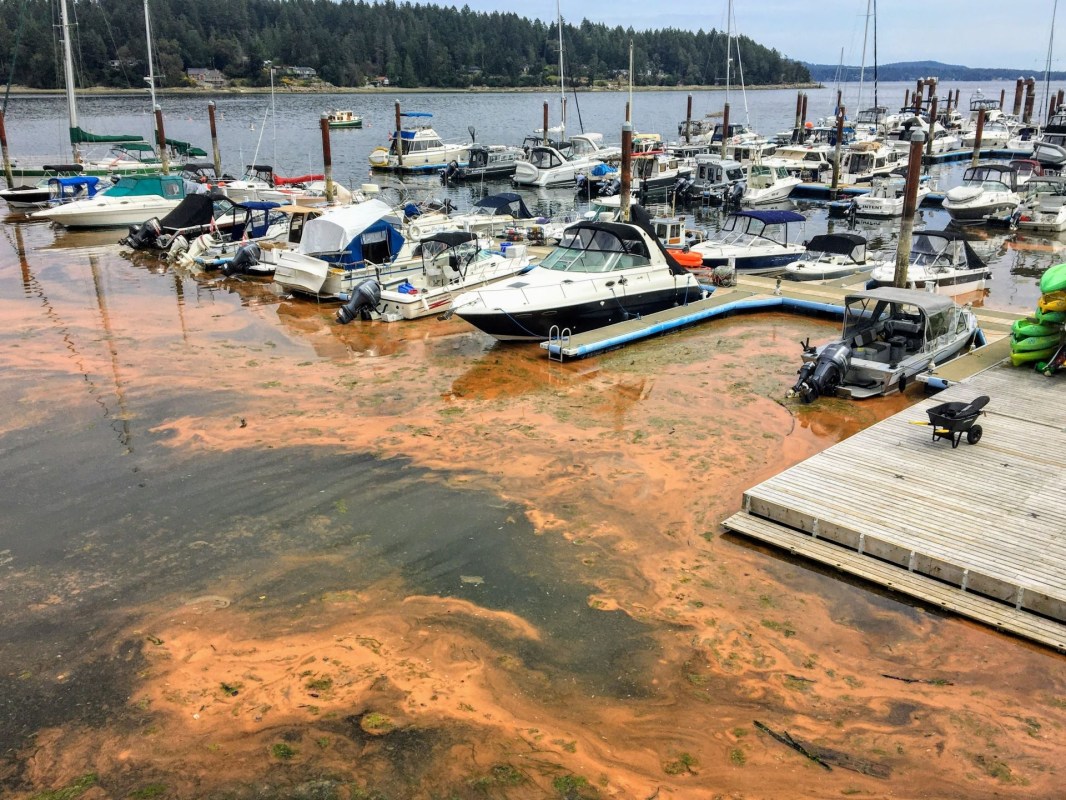Florida's water "looks like root beer, smells like dead fish rolled into compost," Dave Tomasko, executive director of the Sarasota Bay Estuary Program, told CBS — and it's all due to something known as "red tide," a toxic algal bloom that is putting human and animal health at risk.
What's happening?
Florida's coastal communities are experiencing a toxic algal bloom called red tide, which originates miles offshore and is caused by an algae called Karenia brevis. As of early March, it was detected in 114 samples taken in Southwest Florida. Of those, 56 had medium to high concentrations.
At those levels, it is likely that people will experience respiratory irritation. Shellfish harvesting will likely be paused, and fish die-offs will occur. High concentrations also lead to visible water discoloration.
This is not the first time Florida residents have faced red tide. In 2021, hundreds of dead fish showed up along Tampa Bay's coasts. One local fisherman said it "looked like a bomb had gone off." The newest bloom started around September 2022, just before Florida was hit by Hurricane Ian.
According to experts, higher temperatures due to the overheating of our planet contribute to the growth of algal blooms, which thrive in warmer waters.
Red tide seen from above Southwest Florida yesterday
— Max Chesnes (@MaxChesnes) March 6, 2023
Per @calusawater: "Red tide conditions visible from Vanderbilt Beach to Blind Pass" in Lee/Collier counties
📷Ralph Arwood pic.twitter.com/R6YqgvdGPm
Why is red tide concerning?
One of the most visible effects of red tide is fish die-offs — Florida's current red tide crisis is killing off scores of fish, the bodies of which now line the state's beaches. The Karenia brevis algae create brevetoxins, which attack the nervous systems of fish and other marine vertebrates, ultimately killing them. If ingested, these toxins can also cause serious illness and death in land animals, including dogs.
Humans are also at risk. Brevetoxins accumulate in shellfish like scallops and oysters. If you are unlucky enough to eat contaminated shellfish, it can cause neurotoxic shellfish poisoning, according to the Centers for Disease Control (CDC). This can lead to nausea, vomiting, cardiovascular and neurological issues, and rashes.
But even just being near a toxic algal bloom can impact human health. As the wind carries the toxin, people can experience burning eyes, noses, and throats. Those with chronic respiratory issues like asthma may experience worsening conditions.
What's being done about Florida's red tide?
Unfortunately, not much. According to Florida Fish and Wildlife (FWC), there is no "practical and acceptable way to control or kill red tide blooms." The group explains that potential controls must not only kill the red tide organism but also eliminate toxins from the water. "To date, this has not been possible," the agency said.
That said, there are still things you can do to help, according to Marine Laboratory and Aquarium (MOTE). If you live in or are visiting Florida, you can report fish kills by contacting the FWC Fish Kill Hotline at 800-636-0511. Report other distressed animals like sea turtles, dolphins, or manatees to wildlife responders at FWC at 888-404-3922. In Sarasota and Manatee counties, call MOTE's Stranding Investigations Program at 888-345-2335.
You can also contact your state and federal elected officials to encourage them to target research and technology development funding to initiatives that will help mitigate harmful algal blooms.
The National Oceanic and Atmospheric Administration also provides forecasts for red tide to help people predict respiratory irritation. The forecast also includes satellite imagery, field observations, models, public health reports, and buoy data.
Join our free newsletter for cool news and cool tips that make it easy to help yourself while helping the planet.









